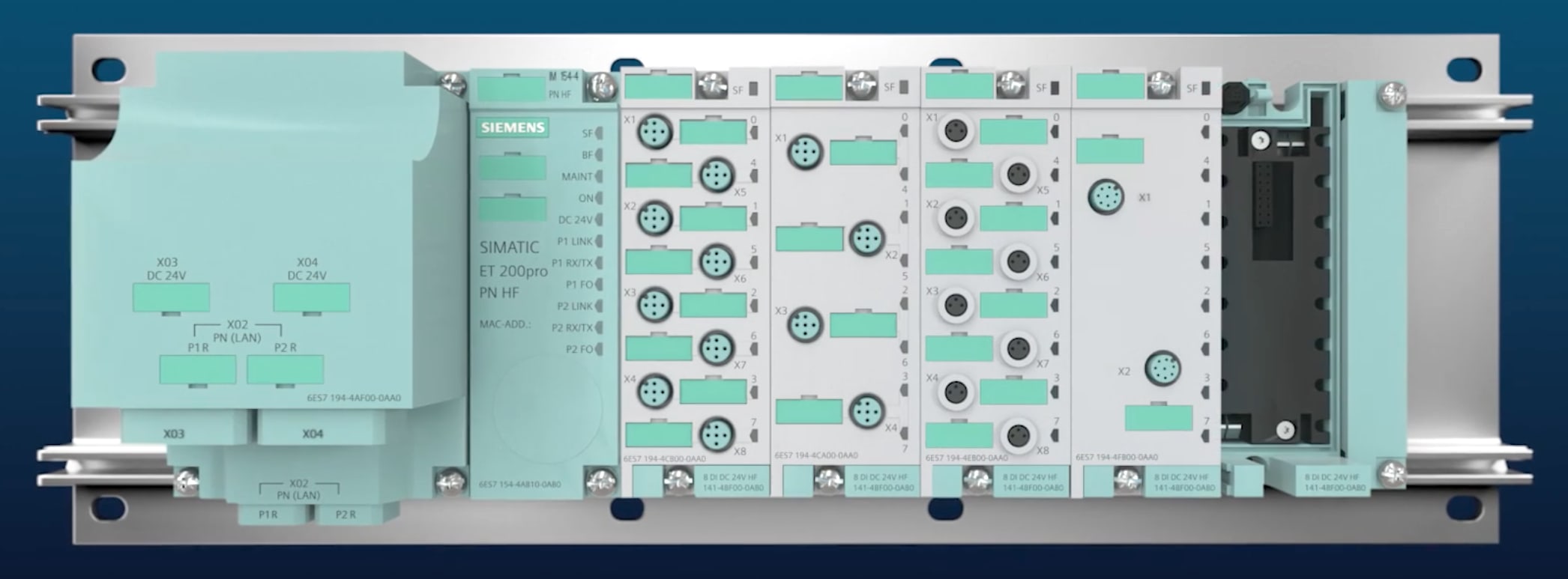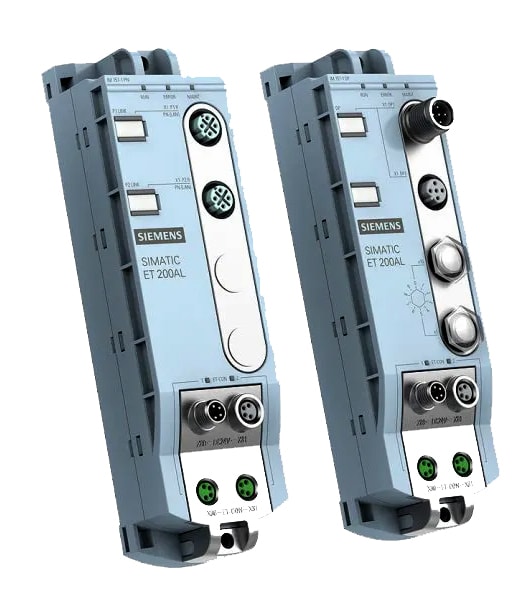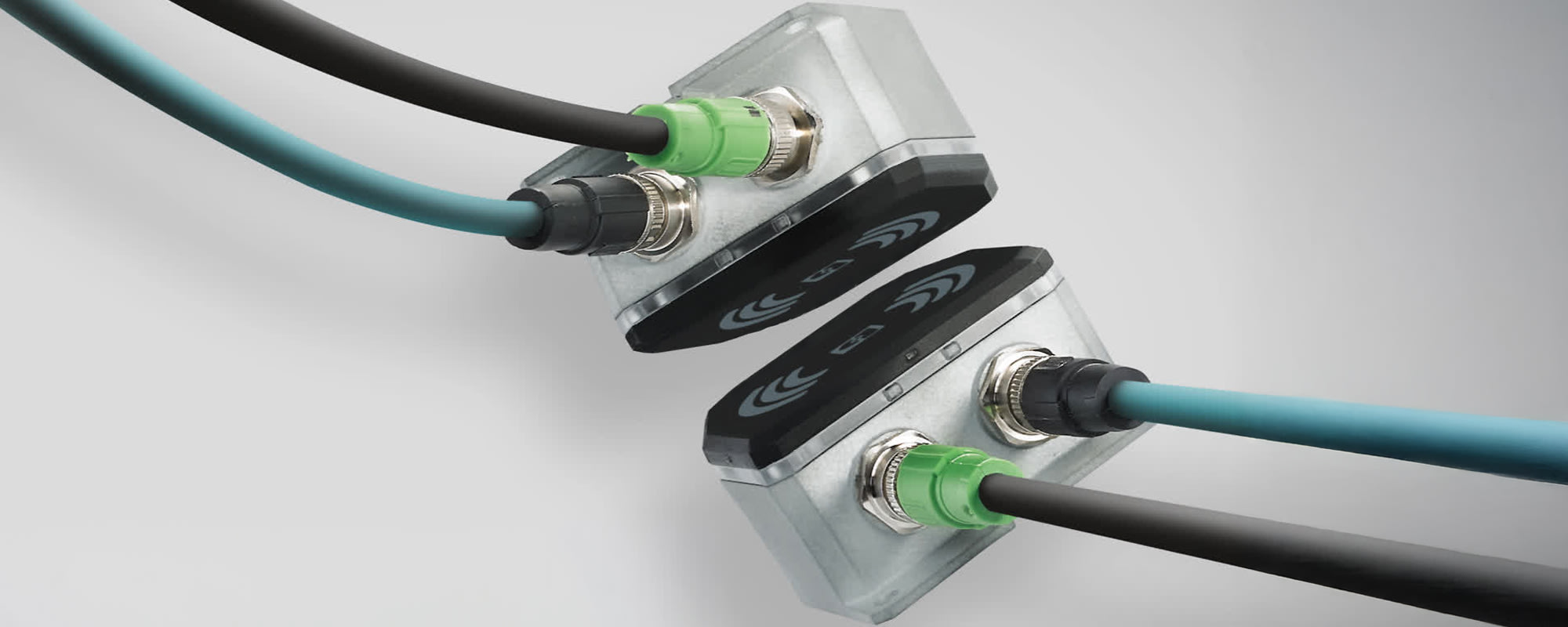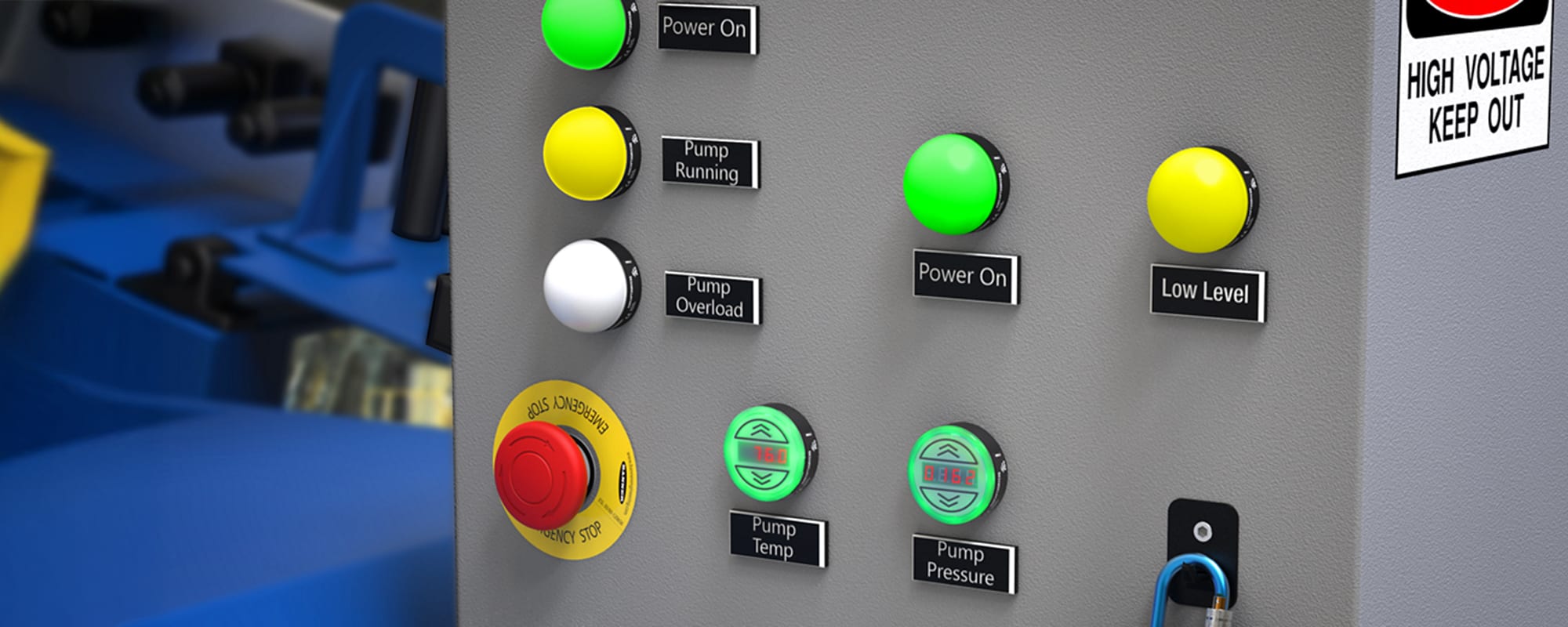Data is one of the most valuable resources for modern industrial organizations. But while most modern machinery and devices readily generate it, you typically need an I/O system to effectively utilize it. Here, Garett Williams, the Factory Automation Portfolio Development Specialist at Siemens, shares his I/O systems expertise, addressing fundamentals, current trends and challenges, and selection and implementation tips and introducing a few IP6X solutions optimized for industrial environments.

Data is most valuable resource for many different types of organizations. Industrial equipment data, for instance, allows manufacturers to optimize processes, improve efficiency, and reduce, if not eliminate, unplanned downtime — all of which combined can improve product quality and save both time and money. But while most modern machinery and devices are capable of generating data, the only efficient way to utilize that data is to collect it in a centralized system. And to do that, you’re likely to need a reliable I/O system.
We spoke with Garett Williams, the Factory Automation Portfolio Development Specialist at Siemens, to learn more. Here, Garett explains why machine-mounted distributed I/O systems are such a crucial component for current and future facilities, why demand for them is rising, the unique benefits they offer, and how to choose the right solutions for harsh industrial environments before introducing a few IP6X solutions from Siemens.
Hi Garett. Please introduce yourself and tell us about your role at Siemens.
I’ve been in the industry for about 25 years, ever since I graduated with a degree in electrical engineering from the Missouri University of Science and Technology. I started my journey with Siemens right out of college, becoming a part of their comprehensive sales program, and I ended up holding numerous positions in their sales department. I actually left Siemens in 2019 and was a systems integrator for three years. But I came back to Siemens because they’re the technology leader in this industry. Now, I’m the Portfolio Development Specialist for Factory Automation and I/O in the U.S., which means I work with our go-to-market teams, sales teams, partners, and other members of our ecosystem on growing and expanding our I/O business in the U.S. market.
Please also provide us with a brief introduction to Siemens.
Siemens is the global leader for industrial automation systems. We’re number one in the world. We provide a comprehensive solution for everything inside of a plant, ranging from power distribution to motor control and protection and automation. I’m part of the digital industries division, where we focus on providing customers with future-proof solutions for factory automation. And that’s what really brought me back to Siemens. We’re truly combining the real and digital worlds to optimize factory automation and help customers turn their automated facilities into autonomous facilities. Siemens is on the leading edge of that — facilitating the evolution of Industry 4.0 to Industry 5.0 — and I’m proud to be a part of that.
You joined us today to talk about I/O systems. Please provide us with an introductory overview.
An I/O system is a system of devices that collect and distribute signals between sensors and actuators on a machine and a PLC or some other sort of controller. Basically, there are signals that come from sensors and actuators, and you need I/O modules to collect all those signals and distribute them as needed between the controller level and the machine level.
An I/O system is typically made up of several types of components. First, you have interface modules that connect to a fieldbus network that the machine or facility uses. Then you have signal modules that collect the digital and analog signals that come from the machine. There are also communication modules for when you have a primary network or primary fieldbus with specific system components that communicate using a different protocol. The last thing you might have are CPUs. Oftentimes, the I/O portion of a control system is the largest portion.
And then you have I/O-Link, which is the fastest growing industrial communication protocol in industry today. It’s growing by leaps and bounds year-over-year, in part because it enables you to access the lowest level of your sensors, your field sensors — simple devices that often don’t communicate back up to the controller in any complex way — and gather that data, which gives you a lot more than just an ON and OFF signal. It also enables diagnostics and other types of data, and in today’s world, you always need more data.
Please tell us more about the benefits of I/O systems and the types of industries and applications they’re used in.
I/O systems are essentially anywhere and everywhere that a signal is needed for control. They’re a vital solution for industrial manufacturing and any other industry that employs some sort of automation or has signals that need to be controlled. So, you see a lot of I/O systems in the infrastructure, water and wastewater, agriculture, energy, oil and gas, and gas utility industries. As I said, it’s everywhere.
You hear people say now, “data is the new gold,” and it’s absolutely true. Today’s companies are facing various challenges related to prevailing trends, including digitalization, a global customer base, and a changing workforce. To meet those challenges, they must transition to using technologies like digital simulation and artificial intelligence (AI) to really optimize their operations and start to move beyond an automated operation to an autonomous operation. To do that, you need more data. And to collect that, you need I/O. That’s why we’ve never seen a greater demand for I/O. Many times, the I/O solution is the largest and most complex part of an automation solution, and that complexity will only increase as we get more and more data.
Complexity can be a burden to manage, slowing performance and leading to quality issues. The answer to addressing that complexity is standardizing open and flexible I/O systems. That’s a critical step for companies looking to boost performance, increase reliability, and ultimately optimize operations in today’s climate.
I/O also enables you to increase your uptime. All industrial organizations want to enhance availability while limiting expensive downtime, and the right I/O solutions allow you to maximize that uptime or availability.
What common challenges do people face when it comes to selecting and implementing industrial I/O systems and solutions, and do you have any advice for overcoming these challenges?
The primary challenge I’m seeing customers struggle with today is the demand for designing future-proof machines and systems. Future-ready designs require a great deal of time in the planning and design phase to ensure that every possible need — from commissioning and operation through to maintenance — is addressed. Sometimes the choices can be overwhelming.
So, when we talk about current challenges for I/O systems, customers need something that’s going to be scalable, flexible, open, etc. They have to think about the type of I/O they require, if it’s going to be centralized in a control cabinet, or if it’s going to be distributed on a machine. To start answering that, especially as you prepare for the future, you must ask how much I/O you need. The more I/O you have inside of a panel, the larger that panel will need to be, and the larger the panel is, the more real estate it takes up. That costs money. You’ll also need to run cable to the panel, and cable also costs money and requires planning. So, that’s a consideration. Further, if you miss something in your I/O planning, that control cabinet gets filled, and you need to add some new functionality several years down the road, it might not be so easy. It tends to be a much bigger endeavor to redesign an I/O system centralized in a control cabinet than one that’s distributed on a machine.

Machine mounted I/O allows you to put your I/O devices where you need the data. This reduces labor costs and can shorten design time and make diagnostics easier, amongst other benefits. So, what we’re seeing a lot of now is kind of a hybrid approach: organizations that still have I/O centralized in a control cabinet in addition to I/O that’s distributed on a machine, where the actual sensor actuators are — especially for larger machines or systems. If you look at the entire I/O market, the subsegment of machine I/O is growing more than twice as fast as the overall market. That’s because — again — industrial organizations are constantly looking for more and more data. Taking your I/O module and putting it directly on the machine makes it easy to access your data, and it’s a lot quicker than redesigning a whole control panel when you want to expand your system or add new functionality.
What is the IP6X rating, and why is it important for industrial I/O systems?
An IP rating defines the amount of protection a product provides in a specific environment. That first digit, the six in this case, lets you know that it protects against solids, particularly dust. The second digit indicates the amount of protection provided against liquid ingress and, when represented by an “X” means that more than one rating is available.
You’re typically going to see are three different ratings: IP65 – protection against dust and sprayed water, IP67 – protection against temporary immersion in water, and IP69 – protection against high-pressure and high-temperature washdown with water or some sort of chemical jet. It’s so important because if you’re going to machine mount I/O, your I/O module must have some sort of IP rating to ensure you’re getting the appropriate level of protection outside the panel. I/O in a control panel has the advantage of that enclosed protection.
Please introduce us to Siemens IP6X SIMATIC I/O solutions.
At Siemens, we provide a broad and comprehensive portfolio of IP6X options for I/O. We try to cover every base so that, no matter what the application is, we have a solution that meets that need. We certainly do that for our IP6X I/O offering, which is designed so that engineering and diagnostics are consistent whether you’re using a standalone block I/O or using a modular IP6X system. This provides engineers and customers with application flexibility and scalability, because there’s often more than just one type of I/O module used. Many applications, and even individual machines, use a combination of several different types. So, if everything is consistent in terms of how engineering is performed and how diagnostics are communicated, that helps from a standardization point of view.
Standardization is a key word for what we’re doing. Customers benefit greatly from being able to standardize on I/O, regardless of the PLC or controller they’re using. In today’s world, your customers could be anywhere in the country or around the world, and you have different levels of various requirements all over. If you’re a machine builder, you want to work with all of them. So, being able to standardize on a single type of I/O, regardless of the PLC or network that’s being used, is very powerful.
Siemens enables this with what we call multi-fieldbus support. It’s a specific functionality that enables communication between the three primary industrial Ethernet fieldbuses that you’ll encounter: Ethernet IP, PROFINET, and Modbus TCP. And this functionality is available throughout our entire IP6X line, so you don’t have to buy a different part number for each of those different networks — which is a significant difference between us and all our competitors. In addition, our multi-fieldbus support functionality helps with standardization as well as integration. If you’re the end user, you can buy machines from different suppliers without having to worry about whether they’ll be able to communicate with each other. You can also communicate to different controllers or different PLCs with different fieldbuses at the same time over the same cable. These unique advantages make integration incredibly easy and will be especially helpful as your facility ages and evolves and adopts new technologies.
And then there’s diagnostics. With Siemens, diagnostics are always handled exactly the same way and look the same way when they’re reported back. So, that’s another advantage of our IP6X I/O line, which includes the SIMATIC ET200eco PN, ET200AL, ET200pro, and new ET200clean solutions.
Please tell us more about the SIMATIC ET 200eco PN I/O system.
This is the most robust I/O that we manufacture. It’s very, very rugged with a cast zinc housing, and it’s relatively compact and can be mounted vertically or horizontally, so it offers flexible installation options. It also provides IP protections from IP65 to IP67 all the way up to IP69K for use in high-temperature and high-pressure washdown environments, and it’s resistant to high levels of vibration, shock, oil, and moisture. So, it’s reliably and robustly resistant to just about any common hazard for a wide range of industrial applications.
Along the themes of open and flexible communication, we offer a variety of I/O-Link master devices for the ET200eco, which — again — allows you to extract data from all the down to that lowest field level that you might not have been able to get before and makes it much easier to optimize your performance.

This series also offers flexible configuration thanks to the integrated two-port Ethernet switch in each block, which means you can daisy chain block-to-block along a long line to make integration easier. It also has M12-L power ports, which provide a higher current carrying capacity, so you can switch higher loads and utilize greater cable lengths in the field, which is advantageous for many different applications.
And while this series can be utilized in pretty much any application, it’s uniquely differentiated for outdoor environments. So, you’ll often see it used in infrastructure projects for bridges and tunnels and things like that. You might also see it in a mine or with mining equipment. That said, users can derive plenty of value using it with conveyors, assembly lines, and other industrial manufacturing and material handling applications.
It’s a diverse line that allows you to configure the ports for digital inputs and outputs, analog inputs and outputs, and mixed configuration devices.
Please introduce us to SIMATIC ET 200pro Distributed I/O System.
The big difference between ET200pro and ET200eco is that ET200pro is a modular and multi-functional IP65 or IP67 I/O system, whereas the ET200eco is standalone. Because it’s modular, each system will require an interface module that you connect to your fieldbus, which then connects to your controller. You might also have signal modules, communication modules, and other components like that to complete your system. And that’s the key advantage of the ET200pro, that you can have a wide variety of I/O modules in a single I/O rack and digital, analog, fail-safe, and other inputs or outputs all in the same system. In total, you can have up to 16 channels per module.
The ET200pro also offers high availability of the I/O due to what’s known as hot-swappable I/O. This means that if you have an I/O module that needs to be changed out for some reason — maybe it’s bad, or maybe you just need a different I/O module in there — the rack will keep functioning if you take it out of the rack to plug in a new module. It also means that the new module will reconfigure itself, which prevents expensive downtime and the subsequent loss of data collection.
It also has a CPU option, which is essentially a PLC that’s integrated in the I/O form factor and that you can use for any kind of application that might require distributed intelligence. Another big differentiator is that is offers integrated drives and motor starters, which is an especially big deal for conveyor and automotive applications that have a lot of motors to drive.

Please tell us more about SIMATIC ET 200AL Distributed I/O System.

This is a very compact and lightweight modular block I/O system. It’s ideal for applications with moving equipment or space constraints, like robotic arms and gantry systems. It’s also well-suited for machine systems that have a lot of metal infrastructure. These things are so small, you can mount them all over the place and in all different ways to fit in even the smallest places. Another unique feature of the ET 200AL is that it can be used as an expansion of ET 200SP, which is a type of in-cabinet I/O, to enable the hybrid in-cabinet and machine-mounted I/O systems that are gaining in popularity and facilitate seamless transitions between the two.
The IP 65/67 Siemens SIMATIC ET 200AL is designed for distributed control electronics in confined spaces and on the move and, when used as an expansion of the SIMATIC ET 200SP, enables the seamless transmission of data in hybrid I/O systems. Visit the embedded links to find them at RS.
Please tell us about the new SIMATIC ET 200clean.

This one is releasing in February 2025, and it’s very, very similar to the ET 200eco, but it comes in an IP69K hygienic package. The keyword there is hygienic, because the ET200clean was developed for food and beverage, pharmaceutical, and other process manufacturing industries where impeccable hygiene is essential.
Along those same lines, it’s called “clean” because it offers the highest level of cleanability for any product on the market. It’s manufactured from a chemically resistant plastic housing, and it doesn’t have a single sharp edge on it. All the radiuses and bevels are very smooth so that, if you need to spray it down, liquid flows off it very easily, and if you need to wipe it down with a cloth, you can easily do so without hitting a snag. It also comes with a feature we call 360-degree cleaning. Most I/O blocks mount directly on a surface. But if you’re a food processing facility, you might have all kinds of hard-to-clean stuff that can accumulate along the edges of that device.
The new ET 200clean has two mounting legs that make it stand up off of surfaces so you can spray all the way around it. You can even get a cloth behind it and wipe it off very easily.
Is there anything else you’d like RS customers to know about Siemens or its IP6X SIMATIC I/O systems?
To sum it all up, customers want options, and we’re focused on solutions that are open, flexible, and designed to help them integrate industry trends and overcome common challenges. Our IP6X SIMATIC I/O systems are the perfect tools for helping customers in every segment of the industrial market collect and leverage more of their system and equipment data — right on down to simple, low-level field sensors — which, in today’s market, is as good as gold.
Optimize and future-proof your industrial facility with I/O solutions from Siemens and RS
Siemens is the world’s largest single-source leader for industrial automation technology products, a leading supplier of I/O solutions, and a world-class developer of technologies that drive innovation and transform industries. RS offers an extensive selection of Siemens products, including the I/O solutions Garett discussed here, such as the IP6X SIMATIC ET 200eco PN, SIMATIC ET 200pro, and SIMATIC ET 200AL distributed I/O systems, as well as industrial controls, switches, PLCs and HMIs, industrial data communications devices, and more. For assistance identifying, procuring, deploying, and maintaining Siemens I/O solutions sure to satisfy your unique application demands, please contact your local RS representative at 1.866.433.5722 or reach out to the RS technical support team.







